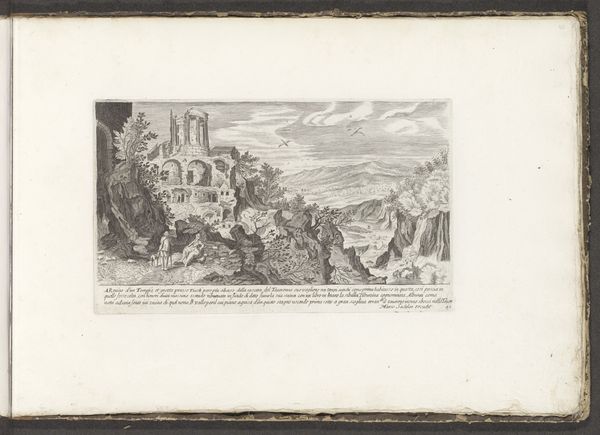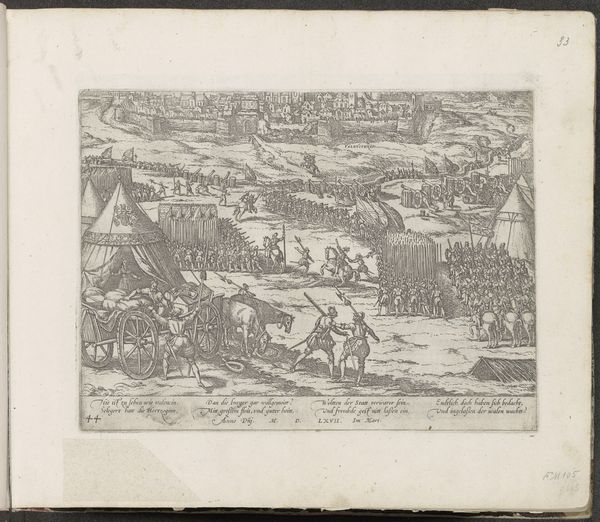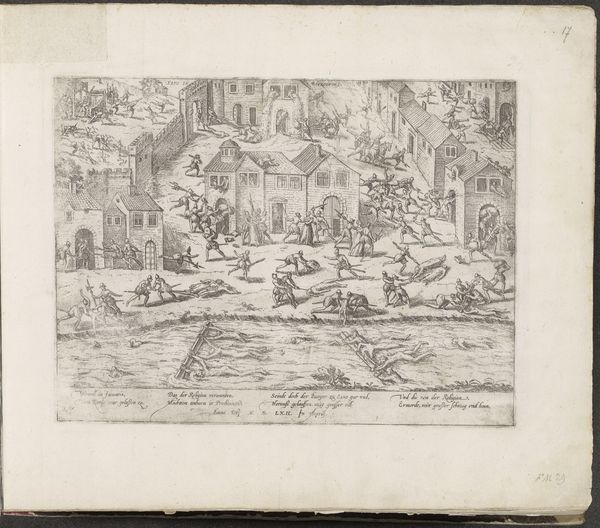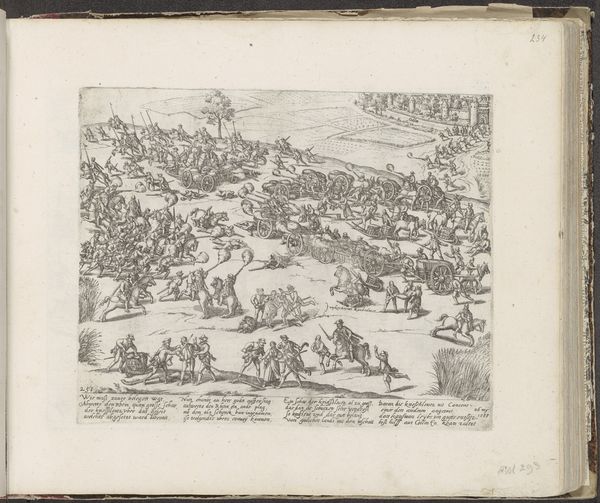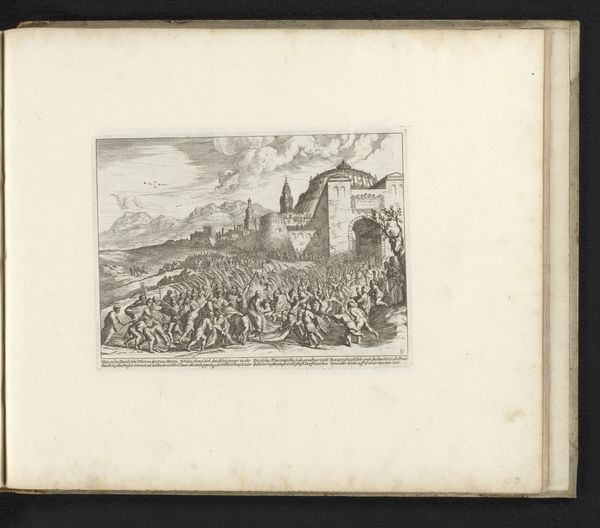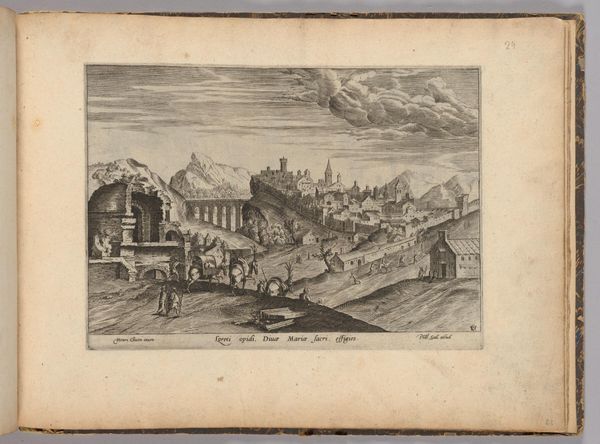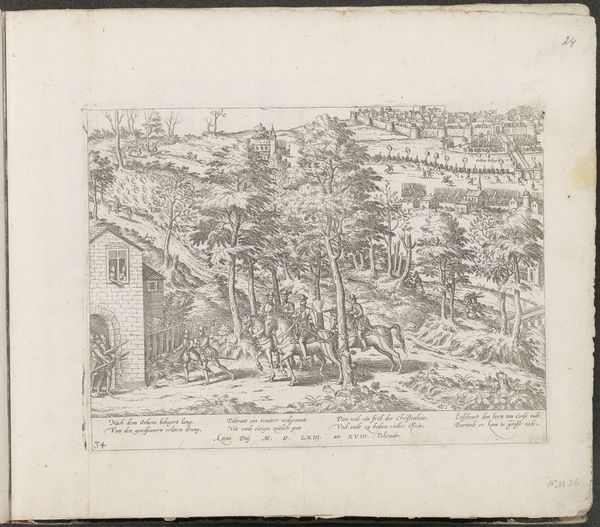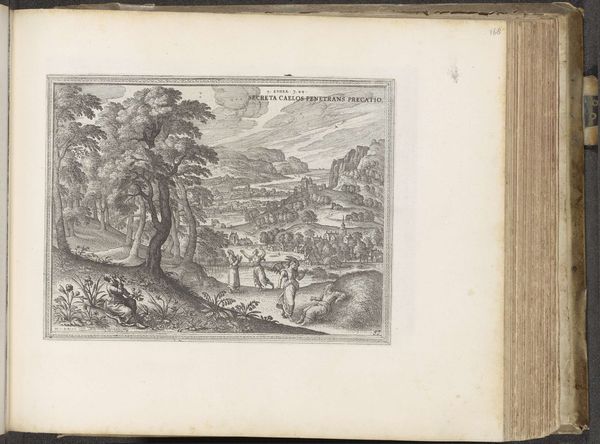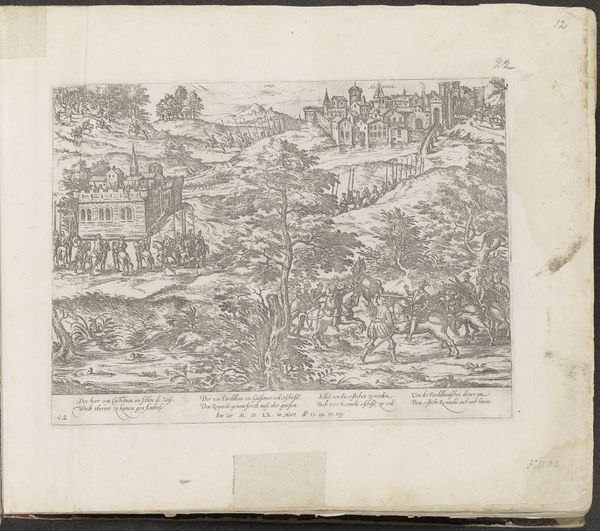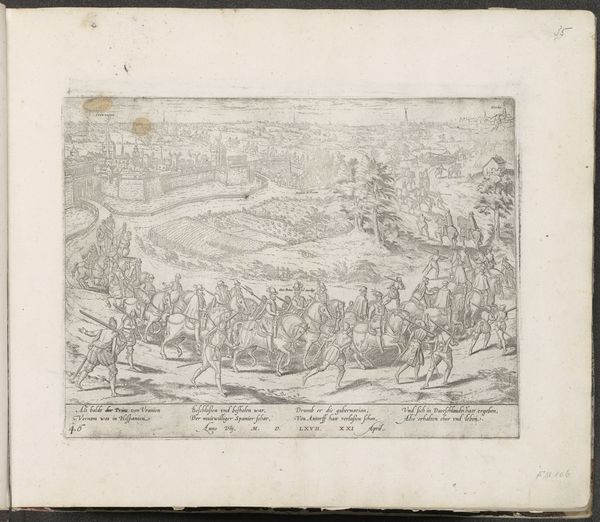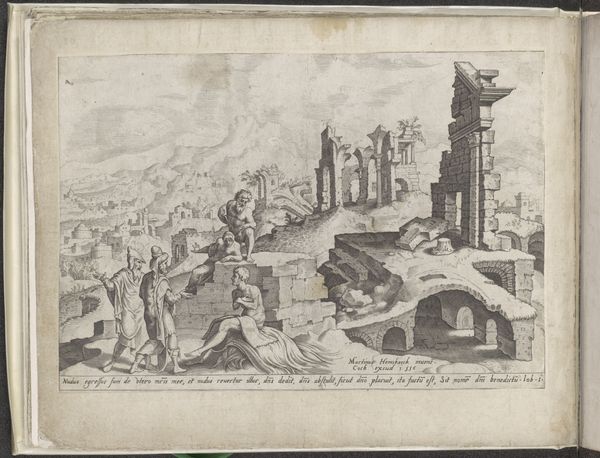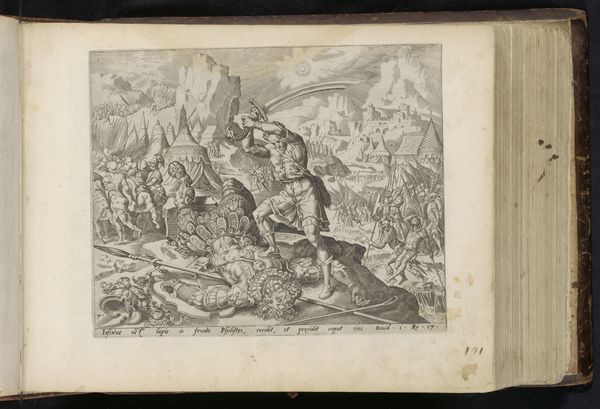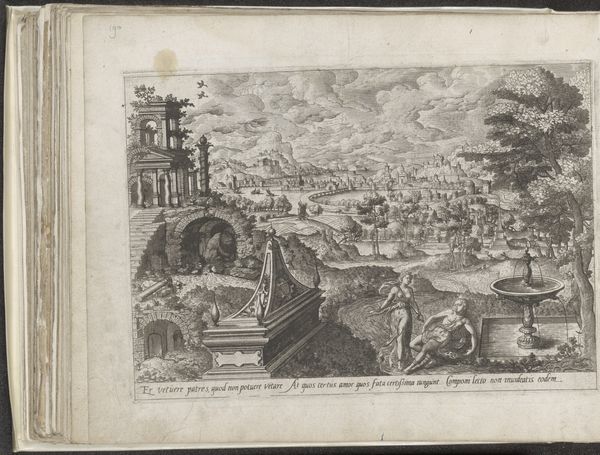
drawing, print, engraving
#
drawing
# print
#
landscape
#
genre-painting
#
history-painting
#
engraving
Dimensions: height 181 mm, width 237 mm
Copyright: Rijks Museum: Open Domain
Curator: What we have here is an engraving dating sometime between 1583 and 1654, entitled "Kaïn en Abel als landbouwer en herder," which translates to "Cain and Abel as Farmer and Shepherd." It's part of the Rijksmuseum collection. Editor: My first impression is one of pastoral laboriousness, strangely serene despite depicting such a fraught biblical story. The scene is brimming with figures, livestock, and a meticulously rendered landscape. It almost romanticizes this moment. Curator: Precisely. Consider the power dynamics inherent in representing Cain, the farmer, laboring directly, versus Abel, the shepherd, overseeing his flock. What comment might be embedded within the institutional preference toward such a visualization? Editor: Good point. Seeing Cain plowing the field, seemingly toiling under some unseen, divine duress, complicates a simple tale of jealousy. Is the image implicitly critiquing the societal value placed on different types of labor, or perhaps commenting on resource allocation? Is that labor considered "unskilled"? Curator: I'd argue both. This portrayal is also a representation, or perhaps a mythologizing of a certain mode of living, one tied to the land and manual labor. In viewing the broader landscape of production surrounding such imagery, what can this reveal about a given museum’s collecting priorities? Editor: Indeed. The very choice to depict the brothers engaging in their respective professions – farming and shepherding – steers us toward an exploration of creation and its consequences. Are they shaping their world, or are they in thrall to it? This can open questions about land rights, or about whose version of creation gains historical, social, or theological currency. Curator: It's striking how much emphasis is placed on their trades. Both, ultimately, offerings to a higher power, no? Perhaps there's commentary on religious systems embedded in these labor intensive performances? It highlights their relationship to divinity as mediated through this idea of hard work. Editor: This has reshaped my view, moving beyond initial aesthetics to deeper, historical context of biblical interpretations and labor practices. I wonder about the influence these narratives held, and continue to hold on political ideologies? Curator: Reflecting on the intersection of art, labor, and religion reveals a multi-layered image where social structures of that time shaped even representations of biblical lore.
Comments
No comments
Be the first to comment and join the conversation on the ultimate creative platform.
